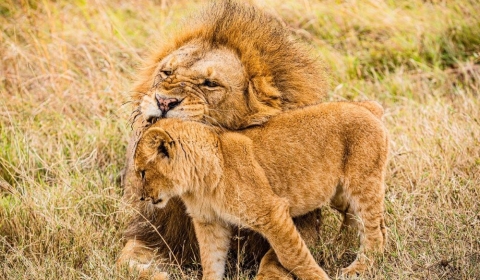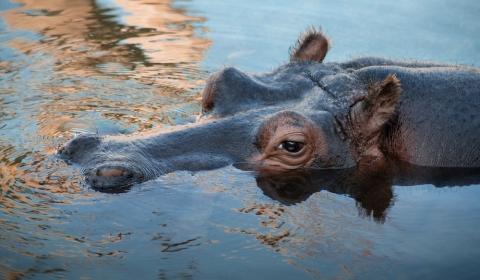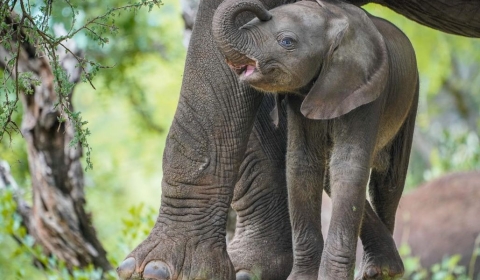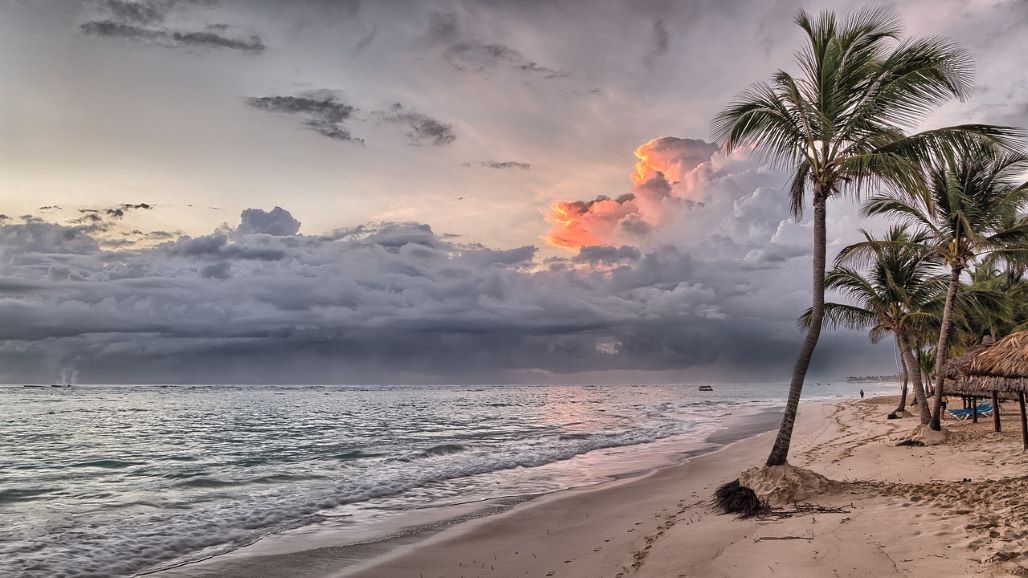
Overview
Location: Eastern Tanzania, along the Indian Ocean coast. Size: Approximately 1,100 square kilometers (424 square miles). Established: 2005.
Geography and Landscape
Saadani National Park features a unique combination of terrestrial and marine environments, including:
Beaches: Sandy beaches along the Indian Ocean, where you can see both wildlife and marine life.
Mangroves: Coastal mangrove forests that serve as crucial habitats for various species.
Grasslands and Savannah: Inland grasslands and savannahs provide habitats for a range of wildlife.
Zaraninge Forest: A dense, tropical forest area with diverse flora and fauna.
Wami River: A significant waterway flowing through the park, providing vital resources for wildlife and opportunities for boat safaris.
Wildlife
Saadani National Park boasts a diverse range of wildlife due to its unique location:
Terrestrial Mammals: Includes elephants, lions, leopards, buffaloes, giraffes, zebras, wildebeest, warthogs, and various antelope species such as reedbucks and hartebeests.
Marine Life: Green turtles, dolphins, and occasional sightings of humpback whales offshore.
Primates: Includes vervet monkeys, black-and-white colobus monkeys, and the rare red colobus monkey.
Birdlife: Over 250 species of birds, including flamingos, kingfishers, herons, and fish eagles.
Conservation Efforts
Saadani National Park focuses on protecting its unique coastal and terrestrial ecosystems:
Marine Protection: Efforts to conserve marine life, particularly nesting sites for green turtles.
Anti-Poaching Measures: Robust measures to protect terrestrial wildlife, especially elephants and other large mammals.
Habitat Preservation: Initiatives to protect and restore mangroves, coastal forests, and savannahs.
Tourism
Activities: Saadani offers a range of activities that combine wildlife and beach experiences:
Game Drives: Explore the park’s diverse habitats and spot various wildlife.
Boat Safaris: Enjoy boat trips on the Wami River, offering close encounters with hippos, crocodiles, and aquatic birds.
Beach Activities: Relax on the park’s unspoiled beaches, with opportunities for swimming and sunbathing.
Walking Safaris: Guided walks through the coastal forests and savannahs provide an intimate experience with the park’s flora and fauna.
Bird Watching: Excellent opportunities for bird watchers to spot a wide range of species.
Cultural Tours: Visits to nearby villages to learn about local cultures and traditions.
Accommodation: Options range from beach lodges and tented camps to basic campsites, providing a mix of luxury and budget experiences.
Best Time to Visit: The dry season (June to October) is ideal for wildlife viewing, while the wet season (November to May) offers lush landscapes and excellent bird watching.
Unique Features
Coastal and Terrestrial Integration: Saadani is the only park in Tanzania where you can experience both bush and beach.
Wami River Safaris: Unique boat safaris provide a different perspective on the park’s wildlife and ecosystems.
Green Turtle Nesting: The park is an important nesting site for green turtles, with conservation programs in place to protect them.
Historical Sites: The park contains remnants of old Swahili settlements, including ruins of ancient trading posts.
Visitor Information
Access: The park can be accessed by road from Dar es Salaam (a 4–5-hour drive) and Tanga. There are also airstrips within the park for charter flights.
Entry Fees: Visitors must pay entry fees, which support the park’s maintenance and conservation efforts.
Regulations: Visitors should adhere to park regulations to protect the wildlife and environment, such as staying on designated paths and respecting wildlife.
Highlights
Bush and Beach Experience: Unique in offering both savannah wildlife and coastal scenery.
Wami River: Boat safaris on the river provide excellent opportunities to see hippos, crocodiles, and birdlife.
Marine Life: Opportunities to see green turtles, dolphins, and occasionally humpback whales.
Cultural Interaction: Opportunities to visit local fishing villages and learn about Swahili culture and traditions.
Diverse Habitats: From coastal mangroves and beaches to inland savannahs and forests, the park offers a wide range of landscapes.
